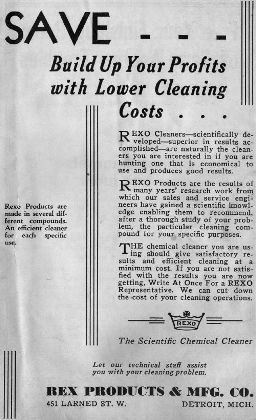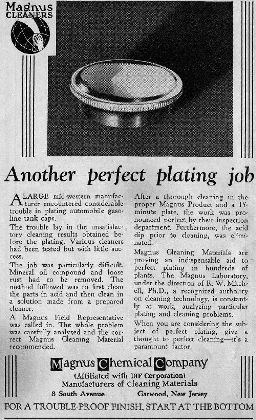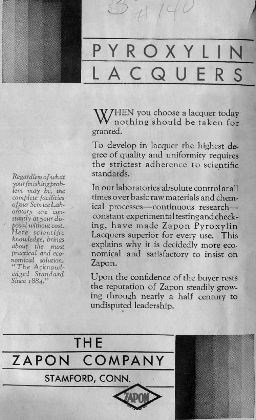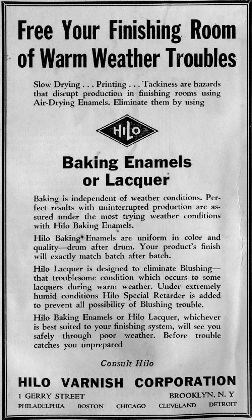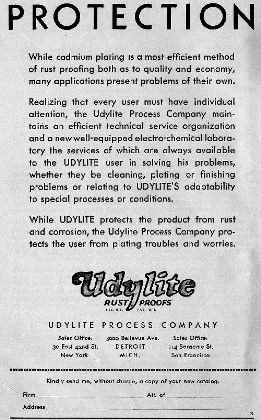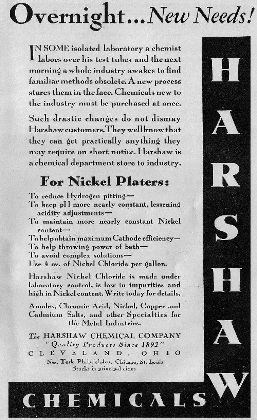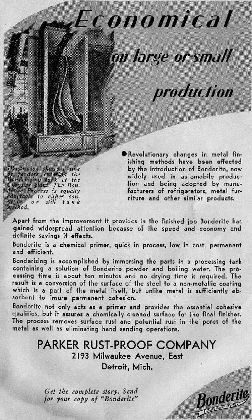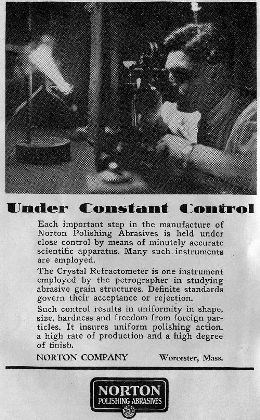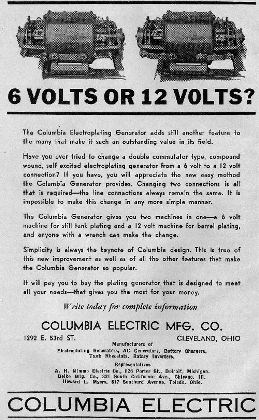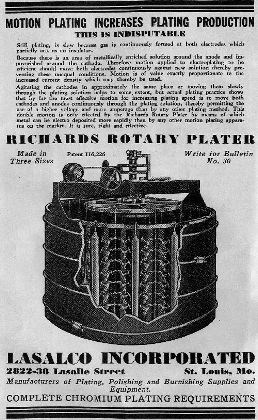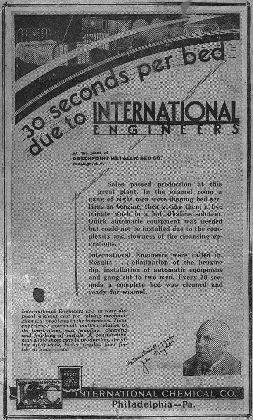A Look at Early Advertising in the Surface Finishing Industry
This article contains a collection of the advertisements published in the July, 1930 issue of Metal Cleaning and Finishing. They capture an instant in time, when the surface finishing industry was quite different from what we find today.
#research #management
By James H. Lindsay, NASF Technical Editor, Lindsay Consultants
A favorite pastime of many, including this writer, is to wander about old antique malls, either locally or while traveling somewhere. One quickly learns the one person’s trash is another person’s treasure. One can also experience frustration at finding a childhood toy thrown out years ago selling for $100. Or a license plate that your dad threw in the garbage back in 1948 now worth a small fortune. Or a free gas station road map selling for $20! Nonetheless, exploring these places often kindles old memories of good times in one’s life. They’re living museums.
Featured Content
Evidence of the importance of the surface finishing industry is often visible in these places too. The chromium still sparkles on the legs of a Formica-topped kitchen table. Ladies’ jewelry abounds, likely plated somewhere in Providence, R.I. or other major city in southern New England. A Ni-Cr-plated grille from a 1957 Chevy hangs on a wall, begging a few hundred dollars from a collector or car buff to take it away.
On the other hand, old magazines are everywhere, but rarely can you expect to find a collection of issues of Products Finishing, Plating & Surface Finishing or Metal Finishing. But it can happen. On one recent visit to a Michigan establishment, I looked through a stack of paper ephemera, and found buried therein, an ancient copy of an old trade publication, an 80 year-old issue of Metal Cleaning and Finishing.
The times were in the early days of the Depression, a few months after the stock market crash. Despite this, the industry seemed to be upbeat. An article on progress in electroplating talked of innovative methods, equipment and materials. A review of the 18th AES Convention in Washington, D.C., lauded the many papers that were presented to 300 attendees (not a bad attendance for the size of the industry in 1930).
Most compelling were the advertisements contained in the journal. The collection of ads showed the state of the industry at the time. The industry was quite different than what was to come in the latter half of the 20th century, first with automotive, then later with electronics, aerospace and
other critical segments emerging. Indeed, plating was a small part of a larger whole, with paints and lacquers a dominant segment of the trade.
Plating involved simple electrolytes, and game-changing research into additives, multilayers, current waveforms and nanotechnology, as well as the challenges of environmental concerns, regulations and substitutes, were off in the future.
What follows is a collection of the advertisements published in the July 1930 issue of Metal Cleaning and Finishing. They capture an instant in time, when the surface finishing industry was quite different from what we find today.
RELATED CONTENT
-
Understanding and Managing White Spots on Anodized Aluminum
Having trouble with spotting defects when anodizing? Taj Patel of Techevon LLC offers a helpful overview of the various causes of white spots and potential solutions.
-
Mechanical Vapor Recompression Evaporation
MVRE is underutilized in the treatment of industrial wastewaters that are typical of metal fabricating and finishing industries. Increasing energy costs, rapidly decreasing freshwater resources, and growing sensitivity towards the environmental impact of industrial management practices are the driving forces in the development of more sustainable technology.
-
Matt Kirchner: Porter’s Five Forces in the Finishing Industry
Higher barriers to entry, minimal competitive rivalry, fewer substitutes and less powerful customers and suppliers—pay heed to Porter’s Five Forces and your next expansion will more likely be a lucrative one.





